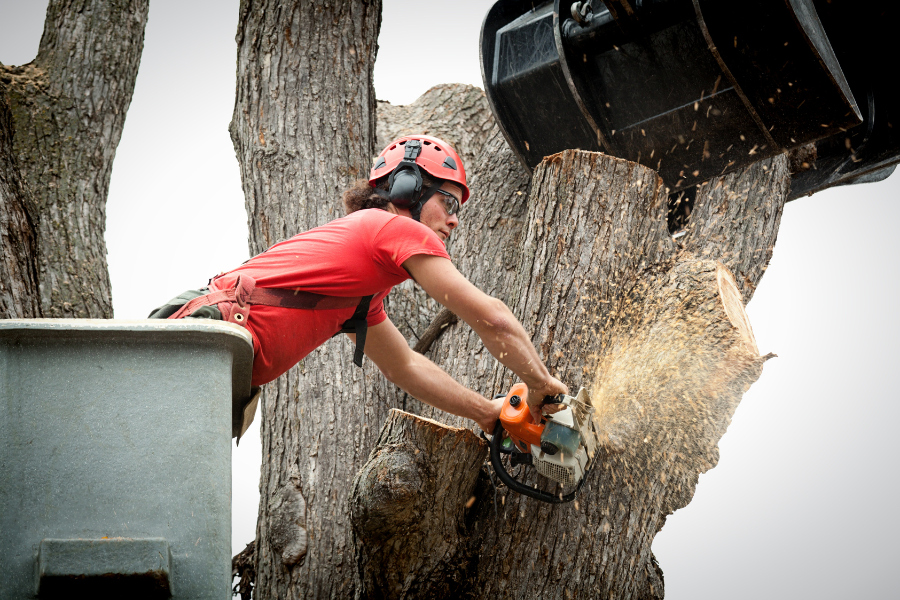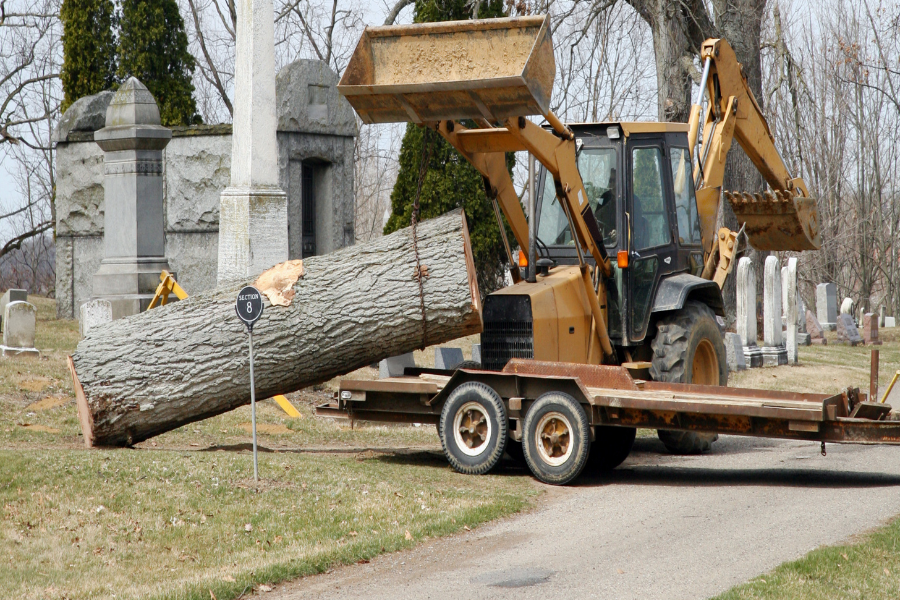Call Your Closest Tree Surgeon

Trees can be an important source of beauty, shade, and habitat. They are also a valuable natural resource and so they must be managed responsibly.
Are you a landowner in Glasgow looking to make improvements or changes to your property?
If so, one of the questions you might have been whether it’s legal to cut down trees on your own land. The answer depends on the type of tree, where it’s located and what purpose it serves.
In this blog post, we’ll explore forestry laws around cutting trees on private property in Glasgow and help you understand when and how you can legally remove them from your land.
The Forestry and Land Management (Scotland) Act 2018 sets out the relevant regulations for felling trees on private land in Scotland. It is illegal to cut down a tree without permission from the Forest Manager—even if it’s on your own ground. Permission, however, may be granted for certain types of tree-felling, including thinning overgrown woodlands; coppicing and pollarding; and removing dead, dying or diseased trees.
In order to obtain permission to fell a tree (or multiple trees), you must submit an application form which includes information about why the felling is necessary and how it will affect the environment around it.
It’s important to note that anyone involved in felling without a valid Felling Permission (where exemptions or Directions do not apply) is breaking the law and may be liable for prosecution, a fine of up to £5000 per tree and a criminal record.
Exemptions to the Tree Felling Laws are provided in some cases, allowing landowners to cut down trees without the requirement for a felling licence. The most common exemptions relate to size, volume and safety.
Trees with a diameter of 10 centimetres or less can be cut down without permission, as long as it is no more than five cubic metres of timber in any set calendar quarter. Additionally, trees in orchards, gardens, churchyards, burial grounds and public open spaces can also be cut down without a licence.
In some cases, landowners may also be able to cut down a tree if it is necessary for the prevention of immediate danger to people or property. Similarly, a completely dead tree can be removed without permission.
It is important to note that these exemptions do not apply if any part of your property has been designated as a Site of Special Scientific Interest (SSSI) or if it is protected by Tree Preservation Order.
If your tree or trees are exempt from a felling permission application, you next need to use Land Information Search to see if the area involved has constraints, such as Special Protection Areas; such as for protected species like badgers and squirrels. If there are any restrictions in place, you will not be able to cut down the tree(s) until you have obtained permission.

If you wish to fell a tree, you may need to obtain felling permission or a felling license from the Commission, depending on the circumstances. Here are the steps you can follow to obtain permission to fell a tree in Scotland:
Note that there may be different requirements for felling trees in different parts of Scotland, and certain trees may be protected by law, such as those growing within conservation areas or subject to tree preservation orders. It’s always a good idea to check with the Forestry Commission Scotland or your local council before felling a tree.
Before cutting down a tree, you should always consider the possible presence of power lines in the vicinity. Make sure to contact your local electric utility provider before deciding to cut down a tree near power lines. Doing so will help protect you from potential accidents and damage to property.
If you have a valid tree-cutting permit, you can safely proceed with cutting down the tree. You have two options: either cut it down yourself or hire a professional tree surgeon to do it for you.
If you decide to do the job yourself, make sure that you are equipped with all the necessary tools and safety gear. Keep in mind that cutting down a tree is no easy feat and can be dangerous if not done properly. Make sure to follow all safety guidelines and check the local regulations for any specific requirements.
If you decide to hire a tree surgery company, you will need to research reputable companies in your area and get quotes on their services. Make sure to ask for proof of certification and insurance. Professional arborists and tree surgeons are experienced in the safe and efficient removal of trees, so they can provide you with the best service possible.
No matter which option you choose, it is important that you respect the nearby property and all safety regulations when cutting down a tree.
Once the tree has been cut down, it is important to dispose of it properly. The most effective way to do this is to take the tree and grind it up into mulch or chips. This can be done through a chipping service, which will come to you with a machine that will turn your tree into compostable material. You can then use this material in your garden or around the house. Alternatively, you can take the tree to a landfill where it will be disposed of safely and responsibly.
It is important to remember that once the tree is cut down, it must be disposed of properly as soon as possible. If left on its own, the stump can become a home for unwanted pests, such as termites. It can also become a hazard if it begins to rot and attract more animals or insects. Therefore, disposing of the tree promptly is essential in order to ensure that your property remains safe and pest-free.
It is important to remember that cutting down any tree without proper planning or authority could lead to legal repercussions – even if the tree is on your property!
This article outlined the Scottish forestry laws governing felling trees on private lands within Scotland and what types of trees can be cut down without needing special permission from forest management authorities beforehand.
Lastly, we discussed urban scenarios where local authorities may grant permission for potentially protected tree felling due to safety concerns or other issues affecting public welfare amongst other reasons – though both parties need consent before beginning work
Quick Free Quote